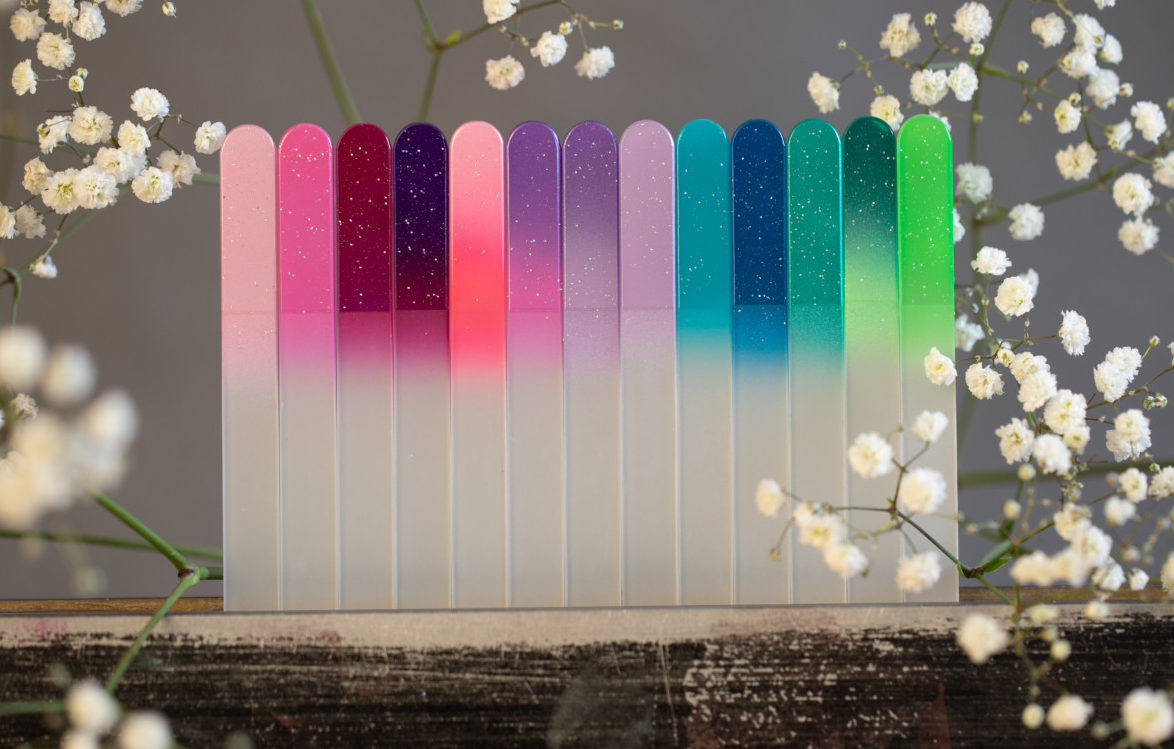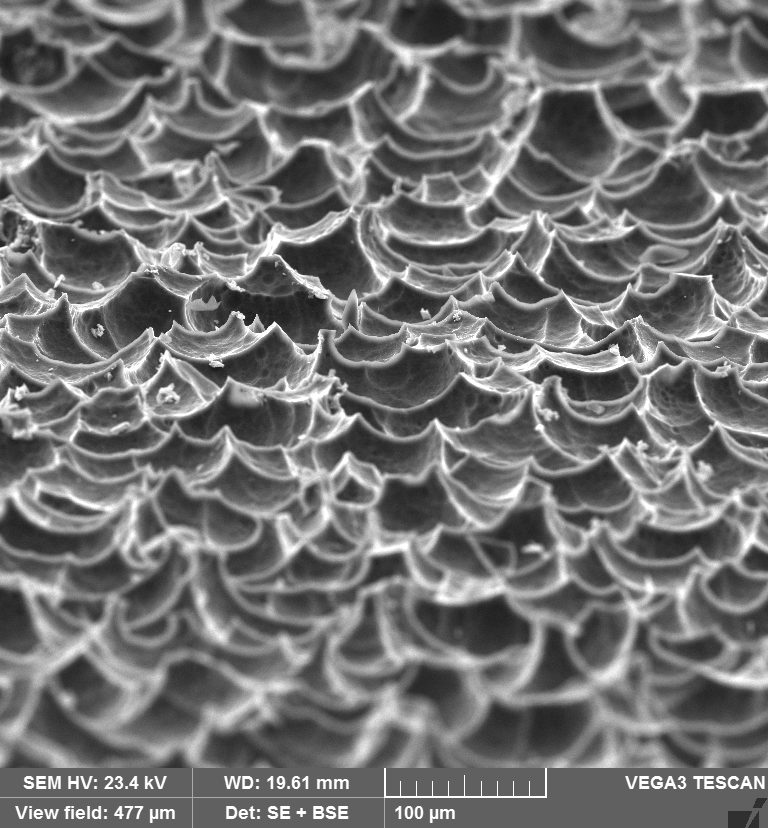What is the grit of a crystal glass nail file?
Nail technicians distinguish files as:
- Fine – grit 400/600
- Medium – grit 220/320
- Coarse – grit 100/180
However, the roughness of glass nail files cannot be easily compared with the roughness of common emery boards or metal files. Common files have grinding grains attached to the surface, while the glass files have grinding elements formed right on the surface of the glass body.
Ordinary metal files and emery boards

Metal nail file
In production of ordinary files, the grinding grains are sorted according to their size through a sieve. The grit number (also called mesh size) refers to the number of openings of the sieve per area.
The higher the number is, the more openings the sieve has and the smaller the abrasive particles are. Therefore, the higher the grit number, the finer the file.
For example – grit 400 (mesh 400) corresponds to particles of approximately 37 microns. For more information, visit https://en.wikipedia.org/wiki/Mesh_(scale)
Acid-etched glass files

Acid-etched glass file
In the production of glass files, during the acid-etching process, the acid eats portions of the glass surface and forms valley-like structures. The diameter of the valleys is 30 – 50 microns. However, the abrasive elements are the edges of the valleys, not the valleys themselves.
Glass files have spiky, sharp abrasive elements that are evenly spread over the surface. Ordinary emery boards or metal files have an irregular grinding surface. This is why common files grind less evenly and virtually tear the nail.
So, what is the grit of glass files?
Assigning glass files to categories of common nail files such as fine, medium or coarse makes no sense. The parameters of the abrasive surface are completely different and a comparison is not relevant.
Treatment with glass files is fast, like with coarse files. The nail edge is super smooth after treatment as with fine files.





